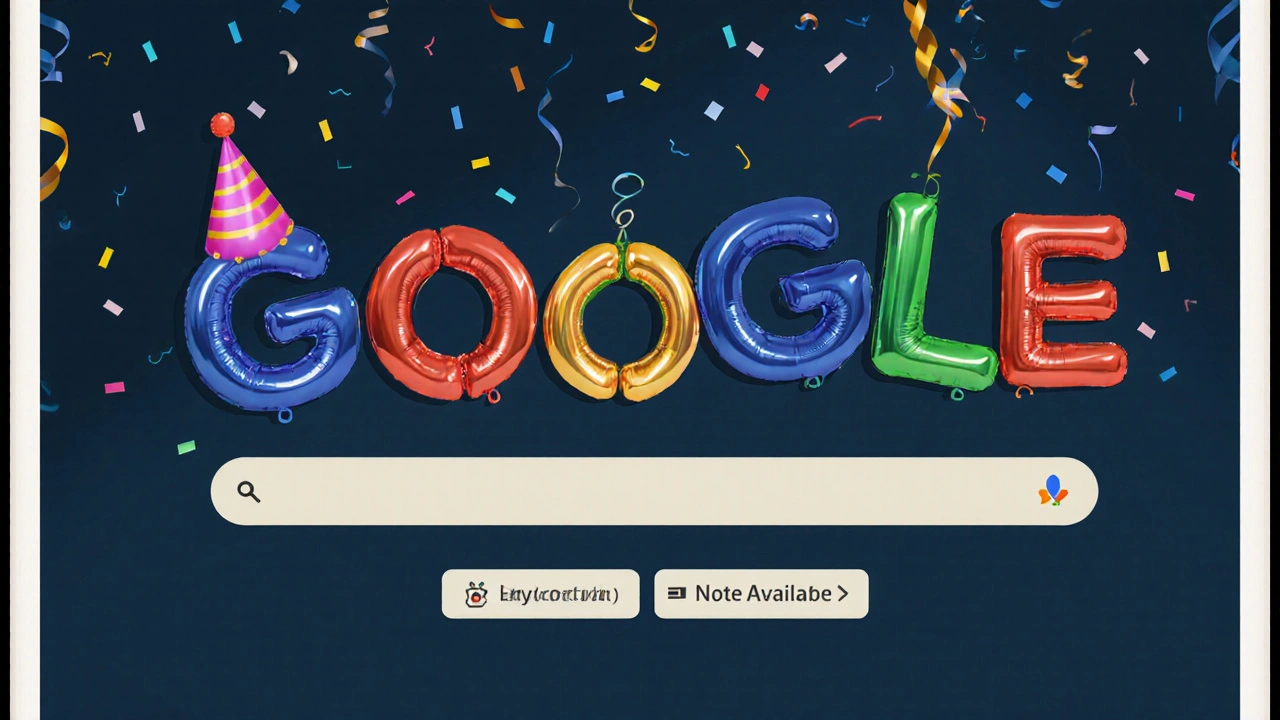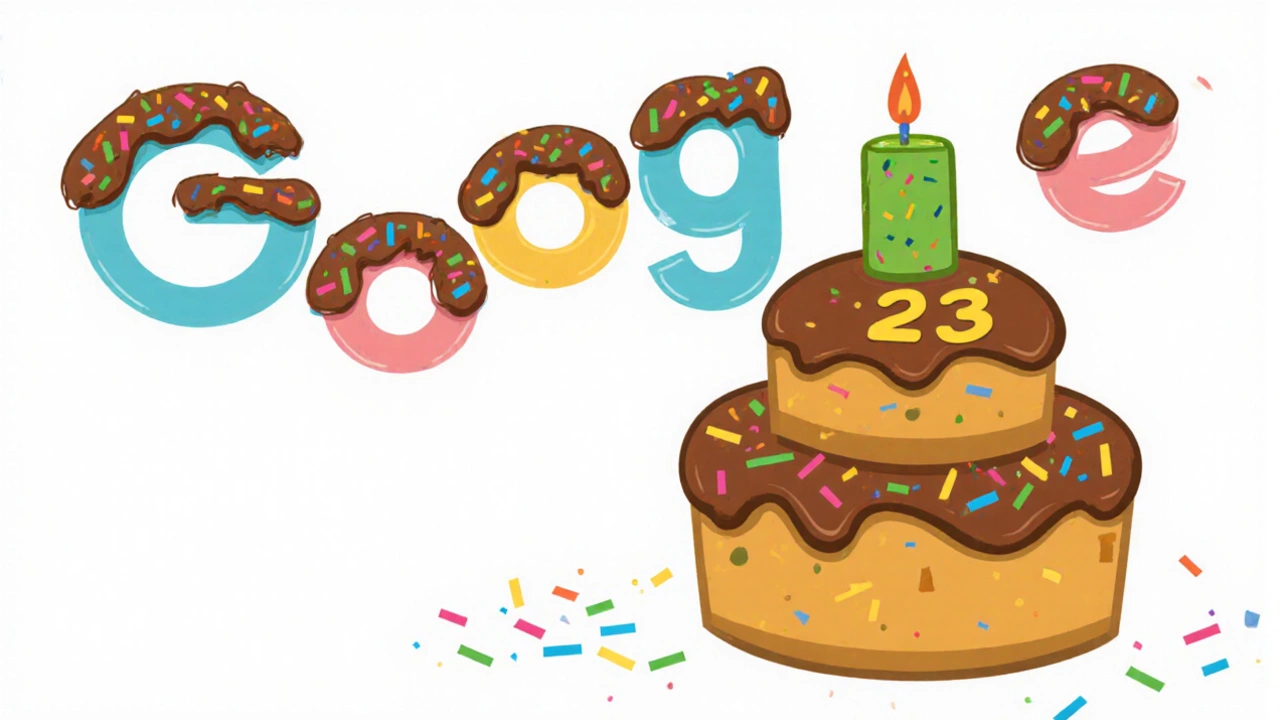Google fans woke up to a surprise on September 27, 2025: the familiar multi‑colored letters were gone, replaced by the very first design the company ever used back in 1998. The change wasn’t a glitch – it was a deliberate Google birthday doodle meant to pull users straight back to the search engine’s garage‑start era.
A Trip Down Memory Lane
The original logo was a simple, teal‑blue wordmark with a modest serif‑type font, a far cry from today’s polished, three‑dimensional lettering. When the doodle appeared, longtime users flooded Twitter, Reddit, and Instagram with screenshots, stories, and even old photos of the home‑page they remember from college libraries in the early 2000s. Many confessed they felt a pang of nostalgia, recalling how they first typed “AOL” or “Napster” into that modest search bar.
Why does a logo change matter? For most people, Google has been a daily habit for years, a digital doorway that shaped how they research, shop, and stay informed. Seeing that early design is like opening a time capsule – it reminds users that the tech behemoth they now rely on started as a Stanford research project funded by a $100,000 check from Andy Bechtolsheim.
Interestingly, the date of the celebration has its own backstory. Google officially incorporated on September 4, 1998, but the company marks its birthday on September 27. Historians note that the early 2000s saw Google experiment with several September dates, likely tying each to different milestones such as the launch of AdWords or the debut of the first Google Data Centers. Since 2006, September 27 has stuck, possibly because that week in 1998 saw a breakthrough in web indexing that gave the fledgling search engine a performance edge.

What the Doodle Means for Google’s Future
Beyond nostalgia, the doodle serves a strategic purpose. It reinforces Google’s brand narrative: a company that respects its roots while constantly pushing forward. The move also dovetails with a suite of subtle in‑search Easter eggs that day – highlighted results for “how to celebrate a birthday online,” “Google birthday parties,” and a hidden Google‑Doodle‑themed game that let users assemble a virtual version of the 1998 homepage.
Google’s evolution since those early days is staggering. The search engine now sits under the Alphabet umbrella, a holding company created in 2015 to manage a sprawling portfolio that includes:
- Gmail – over 1.5 billion active users.
- YouTube – the world’s biggest video platform.
- Google Maps – navigation for billions.
- Android – the dominant mobile OS.
- Pixel hardware – phones, laptops, and smart home devices.
- Gemini AI – the latest generation of large‑language‑model technology.
While founders Larry Page and Sergey Brin have stepped back from daily operations, they still wield voting power through Class B shares, ensuring the company’s original vision stays in play. Sundar Pichai, meanwhile, steers both Google and Alphabet, emphasizing responsible AI and sustainability as core priorities.
The doodle celebration also reminded users that Google’s commitment to innovation isn’t just about flashy products. In the past week, the company announced new features for Search: AI‑driven answer boxes that summarize complex topics, a “quick‑action” toolbar for instant translations, and deeper integration with the Gemini model for more natural query handling.
Social media reactions have been a mix of sentimentality and excitement. One user tweeted, “I remember typing ‘pizza near me’ on my dial‑up connection and getting a plain list. Look at us now – AI suggestions, reviews, and maps all in seconds.” Another posted a side‑by‑side comparison of the 1998 and 2025 logos, captioning it, “From garage to galaxy.” The overall tone underscores how deeply intertwined Google has become with everyday life.
In the broader context, the doodle illustrates how tech giants use heritage marketing to humanize their brands. By showing a softer, nostalgic side, Google invites users to feel part of a shared story, not just passive consumers of a service.
As the day winds down, the original logo will likely switch back to the current design, but the emotional echo will linger. Users continue to share screenshots and memories, and the buzz will keep the conversation alive on forums and news sites for weeks. Whether you’re a longtime fan or a newcomer, the 27th‑birthday doodle makes it clear: Google’s past is a foundation, but its future is still being written, pixel by pixel.
